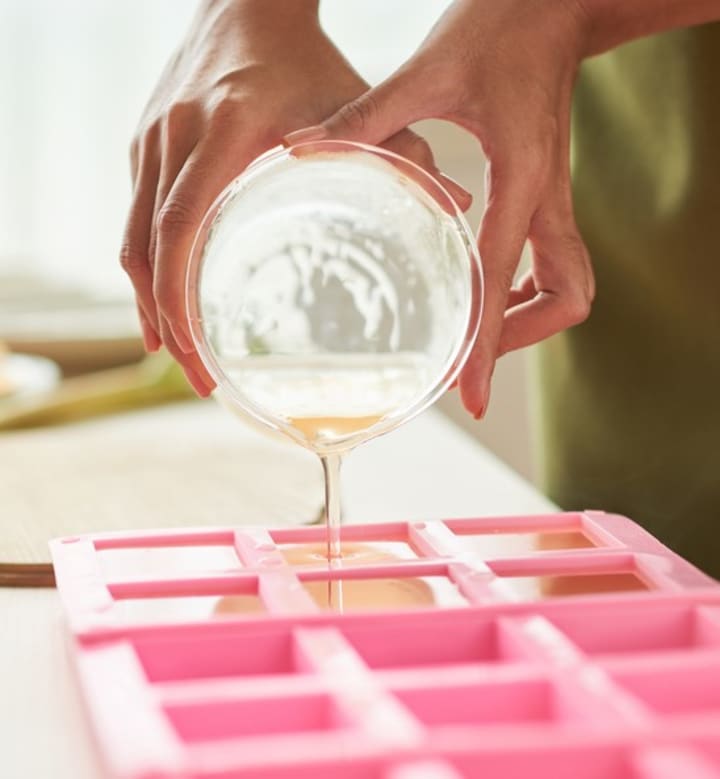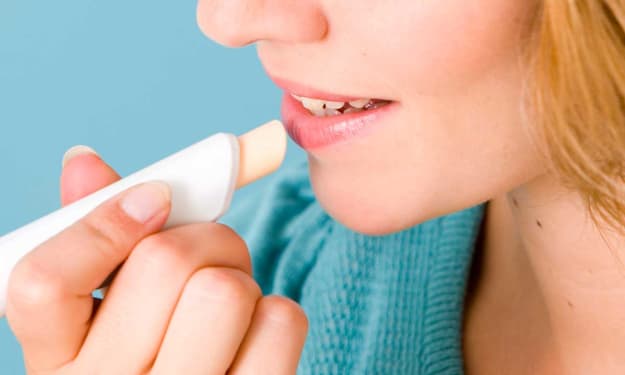Bar-hopping: My Love Affair with Handmade Soap
It's more than just skin deep

I’ll be straight with you: I have an addiction.
I’m addicted to handmade soap.
Now, I realize that’s probably one of the most vanilla things you’ve ever heard, and you’re probably rolling your eyes and yawning simultaneously. But I really do nerd out over a bar of handmade soap. Make it organic with added botanicals or an artisanal bar with swirls and pretty decorations and I’m like a kid in a candy shop. I might buy three or four different kinds each week at the farmers’ market. Every sink and tub in my house have several different bars of soap to choose from depending on my mood. I’m that weird.
It all started some 20-plus years ago when we stopped at a little Greek monastery along a highway in Oregon where the nuns sold soaps and gifts and heavenly Greek sweets in their little coffee shop on the side of the road. With a mouth full of the best baklava I’d ever had, I stopped to sniff the sweet little soaps the nuns had made and ended up buying a couple. It wasn’t until later, after I’d been using their handmade soap for about a week, that I noticed my skin wasn’t as dry and itchy as it usually was that time of year.

I was intrigued. I live where winters are cold, where heaters run perpetually, and where dry skin is practically a given. Had the switch to handmade soap really made that much of a difference? As an experiment, I opened a new bar of the same old commercial “soap” I’d always used and switched it out. Within a day or two I was back to itching.
Did you see what I did there, by they way? How I put “soap” in quotation marks?
No one was more surprised than I was to learn that the trusty old white bars I’d always used were not actually soap. They were detergent bars. As a matter of fact, most of the “soaps” we buy commercially are. And there’s a difference.
Soap, by definition, is a bunch of fatty acids (usually vegetable-based oils and butters or even lard or tallow) that have been neutralized by an alkali (lye). Most commercial cleaning bars, on the other hand, are what’s known as a “syndet” bar. Syndet is short for “synthetic detergent.”

You might be thinking, “Yeah, so what?”
Here’s what: soaps are made with ingredients that occur normally in nature. They tend to be biodegradable and less harmful to the environment. Detergents, on the other hand, tend to be petroleum-based and made with synthetic chemicals such as surfactants, phosphates, and other compounds. They tend to be much stronger cleansers too, sometimes to the point of stripping necessary oils from the skin – often causing dryness and irritation.
Okay, you’re thinking, but soap is made with LYE. Talk about a substance that’s irritating to skin!
You’re not kidding. I’ve actually been burned by lye. And it only took a single, tiny speck of the stuff. But I’ll get to that in a minute. Rest assured, handmade soap contains no lye – and there are a couple of reasons for that. For one thing, when the lye molecules are added to the oil molecules in soapmaking, that chemical reaction I mentioned earlier (a process called saponification) literally changes them into entirely new molecules - soap molecules. Secondly, there’s another process called superfatting that soapmakers use. This simply means they create a recipe that includes more fats (oils and butters) than the amount of lye molecules in the recipe can saponify – usually around 5 percent more. So not only is there zero leftover lye, the handmade soap is gently moisturizing as well.
Which is why I threw my white detergent bar in the garbage bin and forever switched to handmade soap. I have no regrets.
So, to recap - every real bar of soap starts with lye. If it doesn’t, it isn’t soap.

But here’s where the idea of “handmade” soap can get confusing. Some people say you absolutely CAN make soap without lye. You may have even purchased “lye-free” soap at a farmer’s market yourself – or made some at home. This is actually what’s known as “melt-and-pour” or “glycerin” soap, and just as promised, there is no lye involved in working with it. People can buy it at almost any craft store, add their own colors, fragrance, and other additives, pour it in a mold and viola – they’ve made soap.
Except they haven’t. They’ve *crafted* it, certainly. And there are melt-and-pour crafters whose soaps are pure art. But it was already saponified when they bought it. Melt-and-pour artists don’t have to handle lye because it’s already been done for them, and that’s a safe and wonderful option for some folks – although I definitely advise reading the ingredients list beforehand. Melt-and-pour soap bases can contain additives like propylene glycol or Sodium Laureth Sulfate, so know what you're getting beforehand.

My interest in handmade soap eventually led me to learn how to make my own soap all the way from scratch, with lye and everything. And I found that making soap is almost as addictive as using it, although there’s a steep learning curve for sure, and it’s an expensive hobby. After twenty years of practice I’ve turned my hobby into a profitable small business, but success hasn’t come cheaply – or easily.
Remember that teeny-weenie little gram of lye I mentioned earlier? I have a scar on my right forearm where it managed to situate itself between glove and sleeve. It hurt like a mother, which makes sense given that it literally ate through my skin. I’ve had “wet” soap (soap that hasn’t hardened or completely saponified yet) splatter onto my face and burn the areas not covered by my industrial safety goggles. I’ve had entire 20-pound batches go wrong and have to be tossed out.
Which reminds me: the best advice I could ever give to a would-be or novice soapmaker? Never, NEVER use lavender buds in cold process soapmaking. They turn brown. I still have a bar of one of my very first batches where I did that very thing. My family still refers to it as my Mouse Poop soap. Yeah.

So, I’m a soapmaker with a handmade soap addition. Kind of like a baker with a chocolate chip cookie addiction, only less diabetes-inducing. And while I love my own soaps (shout-out to my brand, RestingBirchFace.com – woot woot!), I still love buying soap from other makers at craft shows and farmers’ markets. We’re all different. I have friends who are other soapmakers from all over the world.
Anyway, that’s my story. I’m a soap fiend. A genuine addict, and I’m not sorry. I have no intention of getting clean.
Well, okay maybe a little.

About the Creator
Christina Seine
Herbalist, beekeeper, grandmother, single mother, moon child. She/her. I live in Alaska and this land is part of my soul. Dogs>people. Weeds>lawns. Words>numbers. INFP, Chaotic Good.






Comments
There are no comments for this story
Be the first to respond and start the conversation.